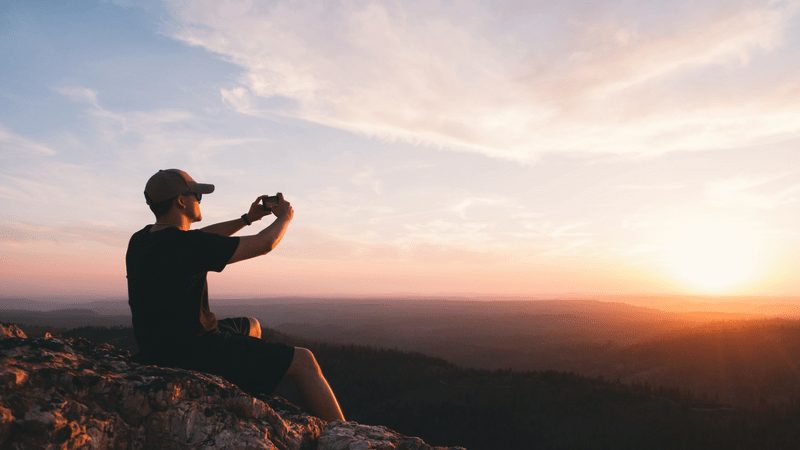Shoot from High and Low
Episode #5 of the course Master smartphone photography by Tom Ang
Hi!
Today, we’ll skill up on one of the most revolutionary contributions that camera phones made to photography. You can shoot from a very wide choice of positions.
Until recently, photographs were made mostly at eye level, with the camera held up to the photographer’s eye. This restricts the choice of viewpoint and so limits choice of perspective. (A few cameras were so-called “waist level” because you could hold them lower down, by your stomach.)
Now, your choice of perspective for photography ranges from eye level to anywhere your arm can reach: from ground level to above your head and as far out to the side as you can stretch. (This led to the exciting discovery that we can make selfies just by stretching out our arm.)
Choice of Perspective
So, let’s loosen ourselves from feeling like we must have the camera close to our face for a shot. You probably already know how to make selfies. But have you tried making shots with the smartphone held high over your head and looking down? Have you tried photographing from ground level, for a worm’s eye view?
Try this! You can do this even as you read this email. I promise you’ll obtain surprising perspectives on your life.
• Hold your smartphone high over your head and point the camera downward: It doesn’t matter if you can’t see what you’re shooting. It’ll be a surprise!
• Hold your smartphone down to ground level and shoot from there: point the camera upward or along the ground. Try shooting without seeing exactly what you’re getting to be pleasantly surprised. (By the way, do be careful in situations where a stranger could misunderstand your intentions as sneaking up on them.)
If you’re tired of the same old smartphone photos, a dramatic change in perspective could put new life into your shots.

Reflection Trick
Finally, I’ll share a favorite trick of mine. When photographing reflections, the biggest reflection comes from shooting as close to the mirror as possible. With smartphones, you can get closer to the mirror than with any other camera.
• Place the lens as close to a reflecting surface as possible to get the best reflection.
That’s how I got the reflection you see in the photo above: It’s on the top of a napkin dispenser. It’s impossible to get this result with even the most professional camera.
I hope you enjoy trying out these techniques. You’ll find that even little tricks can make a big difference to your shots.
Tomorrow, I’ll share ideas to polish your photo compositions.
Till tomorrow!
Tom
Recommended book
Share with friends

